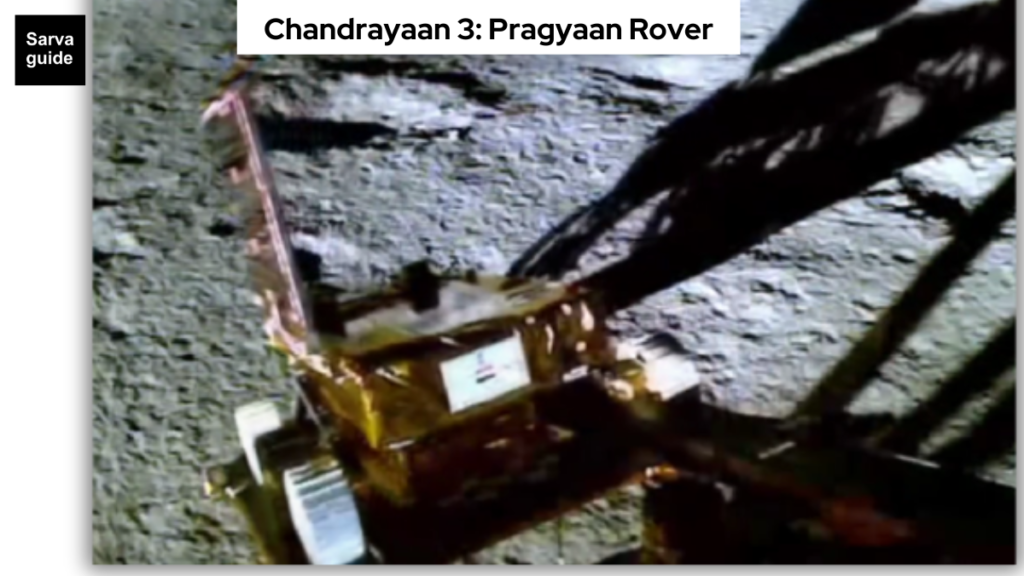|
Getting your Trinity Audio player ready...
|

India’s Moon Pragyaan Rover has made its first steps on the Moon’s surface, a day after it became the first country to land at the south pole.
Chandrayaan-3 rover “rammed down” from the lander, and “India took an Indian walk on the Moon!” The space agency announced that the rover Chandrayaan-3 “ramped down” from the lander and that “India took a walk on the Moon!
Vikram successfully landed as planned on Wednesday evening.
India now joins the elite group of countries that have achieved a soft moon landing, including the US, former Soviet Union, and China.
Vikram Lander carried the Pragyaan rover, a 26 kg rover named after the Sanskrit term for wisdom.
Panels on the side of Vikram were opened after the dust from the landing last night had settled. This ramp was used to allow Pragyaan and her crew to descend to the surface of the Moon.
It will now fly around the rocks and craters and collect data and images that will be sent to Earth for further analysis.
Pragyaan carries two scientific instruments that will be used to study the soil and minerals on the Moon’s surface.
Pragyaan communicates only with the Chandrayaan-2 orbiter, which still circles the Moon. The information will be sent to the Earth to be analysed by the orbiter.
The Indian Space Research Organisation (ISRO) has stated that the rover’s speed will be 1cm/second. With each step, it will leave an imprint on the Moon of the Isro logo and emblem.
The landing coincides with the start of the lunar day. A day on the Moon is equivalent to a little more than four weeks here on Earth. It means the lander will have fourteen days of sunshine for its batteries.
As soon as night falls, the batteries will stop working, and they will cease to function. The next lunar day is yet to come, and it’s unclear if they will be back in action.
The lander also carries several scientific instruments that will allow researchers to better understand what happens on the surface of the Moon, as well as above and below.
Scientists say the large craters at the south pole, always in shadow, could hold ice and support future human settlements on the Moon.
It Could supply propellants for spacecraft heading for Mars or other distant destinations.
The lander’s precarious descent began on Wednesday with tense moments. The lander’s speed gradually reduced from 1.68 km per sec to almost zero. It allowed it to land softly on the surface of the Moon.
Celebrations were held nationwide, and Prime Minister Narendra Modi declared that “India has now reached the Moon,” adding that “we are the first country to reach this milestone.”
The landing occurred just a few days after Russia’s Luna-25 crashed into the Moon.
The crash highlighted the “uneven” terrain and “craters and rocks” of the South Pole region.
India’s second moon mission in 2019 was also unsuccessful. Its lander and rover, but its orbiter, were destroyed. Even today, it continues to orbit the Moon and helps the Vikram Lander send images and data back to Earth for analysis.
India isn’t the only country that has its eye on the Moon. There’s an increasing global interest, and many more missions are headed to the surface of the Moon in the near future. Scientists say there’s still a lot to learn about the Moon, often referred to as a portal to deep space.
Suggestion
Can AI replace human intelligence?
Pragyaan rover landing Video
Video Source:- ISRO (Indian Space and Research Organisations)
